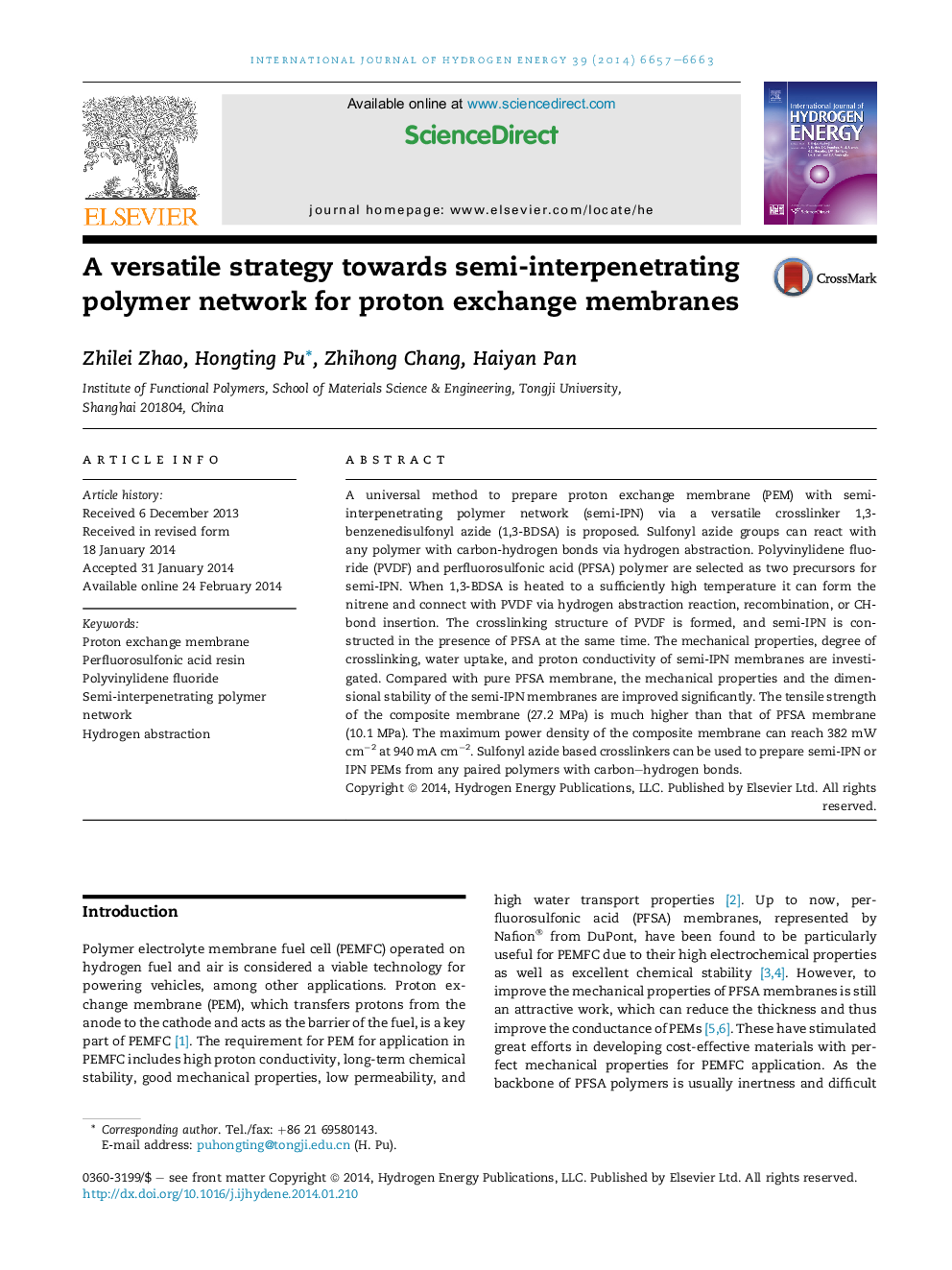| Article ID | Journal | Published Year | Pages | File Type |
|---|---|---|---|---|
| 1272858 | International Journal of Hydrogen Energy | 2014 | 7 Pages |
•Polyvinylidene fluoride (PVDF) is crosslinked via the hydrogen abstraction reaction.•Semi-IPN is formed via crosslinking of PVDF in the presence of perfluorosulfonic acid.•The properties of the semi-IPN proton exchange membrane (PEM) are improved.•Crosslinking via sulfonyl azide is a versatile way to prepare semi-IPN or IPN PEM.
A universal method to prepare proton exchange membrane (PEM) with semi-interpenetrating polymer network (semi-IPN) via a versatile crosslinker 1,3-benzenedisulfonyl azide (1,3-BDSA) is proposed. Sulfonyl azide groups can react with any polymer with carbon-hydrogen bonds via hydrogen abstraction. Polyvinylidene fluoride (PVDF) and perfluorosulfonic acid (PFSA) polymer are selected as two precursors for semi-IPN. When 1,3-BDSA is heated to a sufficiently high temperature it can form the nitrene and connect with PVDF via hydrogen abstraction reaction, recombination, or CH-bond insertion. The crosslinking structure of PVDF is formed, and semi-IPN is constructed in the presence of PFSA at the same time. The mechanical properties, degree of crosslinking, water uptake, and proton conductivity of semi-IPN membranes are investigated. Compared with pure PFSA membrane, the mechanical properties and the dimensional stability of the semi-IPN membranes are improved significantly. The tensile strength of the composite membrane (27.2 MPa) is much higher than that of PFSA membrane (10.1 MPa). The maximum power density of the composite membrane can reach 382 mW cm−2 at 940 mA cm−2. Sulfonyl azide based crosslinkers can be used to prepare semi-IPN or IPN PEMs from any paired polymers with carbon–hydrogen bonds.
Graphical abstractFigure optionsDownload full-size imageDownload as PowerPoint slide
